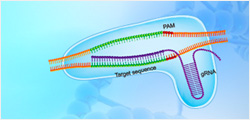APRIL/TNFSF13, His & Flag, Mouse
The APRIL (a proliferation-inducing ligand), also known as TNFSF13, TALL2, TRDL1, and CD256, is a member of the TNF ligand superfamily.Both APRIL and its close relative BAFF bind and signal through the TNF superfamily receptors TACI and BCMA, while BAFF additionally functions through BAFF R.
| ¥3500 | |
| Z06012-100 | |
|
|
|
|
|
|
|
|
|



































